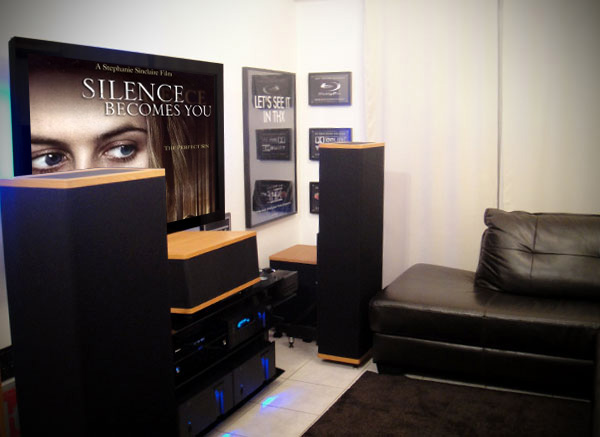
The Klein K-80 colourimeter uses optics designed specifically for small screens, giving it an advantage in sensitivity over any other small screen probe, with very high operational speed, with excellent low light measurement capability.
- ColourSpace INF/XPT/PRO & HTX/HTP & DPS
- Small & Large Screen
- 10+mm Spot Size
- Extremely Fast Response Time
- 0.00009 to 10,000 cd/m2
- Machined Aluminium & High Impact Plastic Construction
Overview
The Klein K-80 provides industry standard colourimetry analysis, as well as the capability to measure flicker, and can measure colour and flicker on TVs, LED backlit displays, CRTs, phones, tablets and more. While the Klein K-80 was designed with small displays in mind, it is an ideal all in one solution for display calibration and flicker analysis.
The Klein K-80 includes standard tripod mounting, and is constructed with machined aluminum and high impact plastic. The K-80's auto ranging is solid state, and all probe readings are consistent regardless of the distance from probe to display/screen.
Specifications
- Large Photodiodes: 5mm x 5mm for superior accuracy
- Measurement Speed: 8 measurements per second
- Measurement Area/Distance: Ø10mm/20mm
- Measurement Range Luminance: 0.00009 - 10,000 cd/m2
- Accuracy Luminance: ± 2% from 10 - 10,000 cd/m2
- Repeatability Luminance: ± 0.1% from 10-10,000 cd/m2
- Measurement Range Chroma: 0.05 - 10,000 cd/m2
- Accuracy Chroma: ± 0.002 x,y
- Repeatability Chroma: ± 1%
- System Response: Closely matches CIE 1931 Std Observer
- Data Interface: USB
- Size: 55mm diameter
- Power Supply: USB port
- Operating Temperature: 15-35°C
- Operating Humidity: < 70% RH non-condensation
- Shipping Weight: 285g
- Calibration: NIST traceable
The K-80 can store up to 90 individual display matrices, enabling specific display technology to be matched.
Note: Internal probe matrices should not be relied on for calibration accuracy - the use of Probe Matching to a Spectro is always recommended, using ColourSpace's unique probe matching methods.
The included Klein Chromasurf application enables user to generate their own matrices, and upload into the probe in addition to those provided as standard, or even from third parties.
Accessories
- Metal carrying case
- Contact measurement guard
- Tripod
All accessories are included as standard.
Recalibration/Re-certification
The K-80 should be factory recalibrated/re-certified every year to two years, depending on usage and storage, or when obvious issue are found (after physical shock to the probe for example).
Contact Klein to schedule recalibration/re-certification.

K-80 Accessories
Klein Alternatives
Light Illusion can supply any Klein probe, or optional accessories.
- K10-A
- K-8
- K-1
- K-10 SF
- Convergence Gauge
- Any Accessories
£variable

K10-A
ColourSpace Integration
As with all probes, operation and function is controlled via the Probe Options menu, accessed via the Profiling window, with the left-hand side of the menu providing generic probes settings, and the right-hand side settings specific to the K-80.

Max Integration Time
Max Integration Time sets the maximum time taken for any given reading, in seconds.
The Klein default setting is 4 seconds, but faster settings can be used in conjunction with ColourSpace's unique Intelligent Integration capability.
Settings
Calibration Settings provides generic probe settings and preset Matrix options, as well as Intelligent Integration, which is unique to Light Illusion calibration software.
Matrix Presets
The Drop-down menu provides access to the pre-set Matrices held within the K-80.
Note: Internal probe matrices should not be relied on for calibration accuracy - the use of Probe Matching to a Spectro is always recommended, using ColourSpace's unique probe matching methods.
Intelligent Integration
Intelligent Integration sets the nits level under which Intelligent Integration will be used.
This provides the best possible low-light measurements, without impacting reading speeds at luma levels above the set value, so maintaining overall speed of profiling.
Average Low Light
Average Low Light is a probe generic option, that averages multiple readings in low-light situations using an advanced algorithm built into ColourSpace. The algorithm varies based on the probe in use to provide the best possible results.
Average Low Light should not need to be used when Intelligent Integration is active.
Enable Visible Feedback
Enable Visible Feedback enables the inbuilt laser pointer, assisting with probe alignment when profiling screens from a distance.
Probe Calibration
The Probe Calibration button will save a dark current calibration reading, used to improve reading accuracy in low-lights.
Make sure the lens cap is fitted to cover the probe sensor.
Probe Adjustments
Probe Adjustments are generic probes settings, with consistent operation regardless of the probe in use.
Configure Matching
Probe Matching is used to match a Tristimulus to a Spectrometer, increasing the profile accuracy.
There are three different methods available for probe matching - ColourSpace's unique 4 Colour Volumetric Matching (FCVM), and Multi-point Volumetric Matching (MPVM), with the option to force the use of the traditional simple matrix method (FCMM).
Offset
Probe Offset enables a user to manually enter offset values for different probes/display combinations.
Perceptual Colour Match is a preferable approach.
Extra Delay
Extra Delay sets a delay time after the patch has changed before probe measurement starts, and can be set automatically via the Auto button, and manages signal path delays in the image pipeline.
Note: Some probe/settings/display combinations will not work accurately with the Auto function




